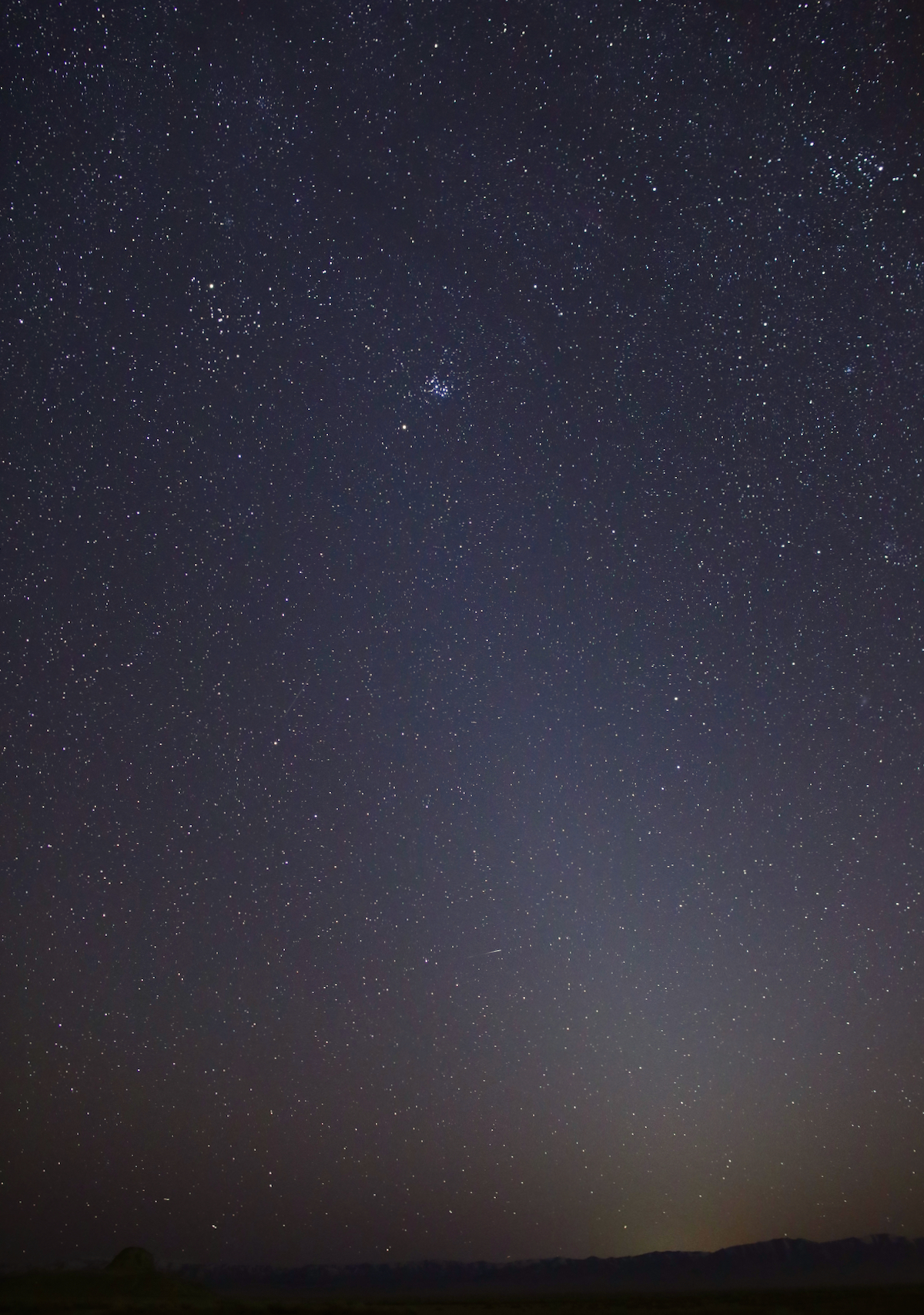Mars dust storms may cause mysterious 'zodiacal light' in Earth's night sky
NASA's Juno spacecraft has detected interplanetary particles that suggest Martian storms fill the solar system with dust, causing a strange haze known as zodiacal light to be seen from Earth.
Zodiacal light is a faint column of light extending up from the horizon after dusk and before dawn. Its luminous glow is caused by sunlight that is scattered by an interplanetary cloud of tiny dust particles orbiting the sun, and reflected toward Earth. Originally, the dust particles were believed to be remnants of asteroids or comets that traveled through the inner solar system. However, new data from NASA's Juno mission to Jupiter suggests that the particles are ejected from Mars during global dust storms.
Juno launched in 2011 on a trajectory that carried it out to the asteroid belt between Mars and Jupiter, before it swung back around Earth for a gravity assist, which gave the spacecraft a much needed boost to reach Jupiter's orbit in 2016. Along the way, Juno flew through the dust cloud that is believed to cause the zodiacal light and was repeatedly struck by small grains of dust. These impacts were recorded by the spacecraft's cameras, which detected unfamiliar pieces of cosmic debris — small shards that had been chipped off of Juno's solar panels by dust particles traveling about 10,000 miles (or 16,000 kilometers) per hour, according to a statement from NASA.
Video: Juno spacecraft was 'pelted' by dust, provides zodiacal light insight
Related: Zodiacal light and meteors light up the night (photo)

"We thought, 'Something is really wrong,'" John Leif Jørgensen, lead author of the study and a professor at the Technical University of Denmark, said in the statement. "The images looked like someone was shaking a dusty tablecloth out their window."
Using the images from Juno, the researchers calculated the apparent size and velocity of the cosmic debris. The study shows that the majority of dust impacts occurred between Earth and the asteroid belt. However, Juno's solar arrays weren't damaged by the impacts.
"Even though we're talking about objects with only a tiny bit of mass, they pack a mean punch," Jack Connerney, co-author of the study and Juno's deputy principal investigator, said in the statement. "Each piece of debris we tracked records the impact of an interplanetary dust particle, allowing us to compile a distribution of dust along Juno's path."
Breaking space news, the latest updates on rocket launches, skywatching events and more!
The researchers estimate the thick disk of dust extends from Earth — whose gravity sucks up particles that get near it — to just beyond Mars, where the influence of Jupiter's gravity acts as a barrier, preventing dust particles from traveling any further into deep space. Known as orbital resonance, this phenomenon also blocks dust originating in deep space from entering the inner solar system, which helps narrow down the source of the dust cloud that causes the zodiacal light.
In addition, the influence of Jupiter's gravity barrier also indicates that the dust particles are in a nearly circular orbit around the sun. Therefore, researchers believe the Red Planet is a source of the interplanetary dust, given Mars — the dustiest planet we know of — also has an almost circular orbit and lies within the dusty disk, according to the statement.
Related: Red Planet dust storms rage in Mars Express photos

Using computer models, the researchers mapped the distribution of the dust cloud to simulate how light is reflected by the interplanetary particles. When factoring in the orbital elements of Mars, the models predicted the same pattern of zodiacal light seen from Earth.
While these models helped identify the origin of the dust particles, as well as how the particles orbit in our solar system, further research is needed to understand how dust escapes Mars' gravity, the authors said. However, mapping the distribution and density of this interplanetary dust will help protect future spacecraft missions, according to the statement.
Their findings were published March 9 in the Journal of Geophysical Research: Planets.
Follow Samantha Mathewson @Sam_Ashley13. Follow us on Twitter @Spacedotcom and on Facebook.

Samantha Mathewson joined Space.com as an intern in the summer of 2016. She received a B.A. in Journalism and Environmental Science at the University of New Haven, in Connecticut. Previously, her work has been published in Nature World News. When not writing or reading about science, Samantha enjoys traveling to new places and taking photos! You can follow her on Twitter @Sam_Ashley13.
